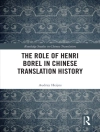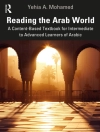This handbook brings together contributions from the main experts in the field of multilingualism and language varieties (including dialects, accents, sociolects, and idiolects of specific speech communities) as expressed in fictional dialogue on-screen in films, and television series. The chapters included in the volume cover both the representation of these varieties and multilingual situations on screen as well as their translation into a range of languages. The handbook will thus be an essential resource for scholars and students in diverse fields including translation studies, audiovisual translation, linguistics, dialectology, film and television studies.
Spis treści
1. The Joy of Multilingualism.- Part I Foreignness and Otherness.- 2. Multilingualism as a Marker of Foreignness in Translation: Language Varieties to Help Depict the Out-Group on Screen.- 3. Constructing the Other: Linguistically Manifested Otherness in Audiovisual Translation.- 4. Portraying Middle Easterners in English-Speaking TV Series: From Stereotypes to Nuanced Portrayals.- 5. Representing Migration.- Part II Character Portrayal and Stereotypes.- 6. Sociolects on the Small Screen: The Case of the British Upper Class.- 7. US Language Varieties in TV Series.- 8. Gayspeak, Camp Talk, and In-Between Languages in Screen Representations.- 9. Negotiating Identities from Intersectional Perspectives: Gendered Translation and Accessibility in Audiovisual Fiction.- Part III Audiences and Prosumers.- 10. Fan Translation and Multilingualism.- 11. Cyberdubbing and Language Variation.- 12. Viewing Multilingual Films in the Original and Translated Version(s): What Message Do Audiences Receive?.- 13. The Illusion of Symmetry: Subtitling African American into French.- Part IV Power Relations and Social Interactions.- 14. Multilingualism in Chinese Cinema.- 15. Fascism and Film Translation in and between Italy, Germany, and Spain.- 16. Accent and Dialect in Literary Adaptations and in Translation.- Part V Animation, Youth and Comedy.- 17. Talking Young: The Language of Youth on Screen.- 18. Multilingual Humour in Sitcoms.- 19. Funny Foreigners: Sometimes Not So Funny and Not So Foreign.- 20. Humorous Tropes in Multilingual Films.- 21. “Wingapo, Father”. Multilingual Chronicles of Coming-of-Age Journeys in American Ethnically Diverse Animated Films and Their Italian dubbed version.- 22. Diejen Is Iejl Prikkelboar: Language Variation in Dutch Dubbing of Popular Computer-Animated Feature Films for Flanders.- Part VI Modes and Alternatives.- 23. Invented Languages in AVT.- 24. Multimodality on Screen and the Filmic Potential of Sign Languages.- 25. Didactic Audiovisual Translation and Teacher Training: A Preliminary Approach.- 26. Latin (and Less Greek) in Popular Films from the 1980s to the Present.- 27. Translating Film Titles—A Qualitative and Quantitative Approach.
O autorze
Irene Ranzato is Associate Professor of English Linguistics and Translation at Rome Sapienza University, Italy. Her interests focus on audiovisual translation, on the study of regional and social varieties of English and on the intersection between language and ideologies in fictional dialogue.
Patrick Zabalbeascoa is a Full Professor in Translation Studies at the Pompeu Fabra University in Barcelona, Spain. He lectures in translation theory and audiovisual screen translation, mostly from English into Spanish and Catalan. His research is focused on translation studies, with special attention to the television and the cinema.












